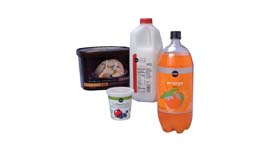
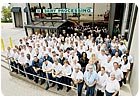
So it should come as no surprise that its food manufacturing division strives for the same level of quality that’s reflected in the company slogan “Publix, Where Shopping is a Pleasure.”
That said, some of the things that Publix does at its largest dairy facility in Lakeland, are indeed surprising. This is not just a quality plant, but also a plant that pushes the envelope a bit. This has been especially evident since January 2006 when the Lakeland plant instituted a system for extended production runs of fresh milk.
“We’ve been approved by the state of Florida for an extended run,” says the plant’s General Mgr. Vincent Paolillo. “We do three production runs a week. We start on Monday, Wednesday and Friday and run about 37-38 hours with a 10-hour cleanup in between so we can get from startup to startup in about 48 hours.”
The long runs have improved both productivity and product quality, and changed the entire culture of how the milk operation is run, Paolillo says.
But milk is not the only focus at the facility, which was built in 1980. The plant is also home to Publix’s main ice cream operation; it houses the manufacture of yogurt, sour cream, cottage cheese, dips, juices, drinks and water. There is also a line that’s dedicated to filling 2-liter bottles of soft drinks.
Most recently, the plant’s chemical room was completely transformed, and Lakeland also took the lead in adopting a new leak-resistant, tamper-evident cap for all milk and related fluid products. The new cap is now used at all three of the company’s dairy facilities for all such products.
“Our Lakeland plant is the largest of our dairy facilities and it’s really a great example of what our dairy operations are all about,” says Jay Jaskiewicz, dir. of dairy manufacturing at Publix.
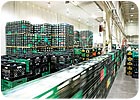
Long runs equal long shelflife
Operating fresh milk runs of 36 hours or longer is not standard procedure for most dairies, in fact it is quite the exception to the standard runs of 14 to 20 hours. There is nothing unusual about Lakeland’s process equipment or its pasteurization regimen. What is different is the sanitation processes and the attention to detail and thoroughness therein.“The whole culture had a shift from one that was production-oriented to one that is sanitation-oriented. You can’t run a business like this with a weak sanitation program”, Paolillo says. “We increased our run time, but what we had to do to accommodate that is to make sure we put the emphasis on sanitation and preventive maintenance.
“It’s not only increased our capacity but it’s helped our shelflife because now we really concentrate for 10 full hours on sanitation. It also provides us more opportunities if maintenance and repair are needed.”
In most dairy plants, crews might only have four hours to do sanitation, and if they are scheduled to shut down but haven’t yet met production goals, the tendency is to keep running. Sanitation can get squeezed in an effort to get started again.
But at the Lakeland plant, when the time for shutdown is reached, the run is completed and the switches are thrown.
To be able to do that, and meet a fluctuating demand for a perishable product, the Lakeland plant must work closely with the distribution centers that it supplies and ultimately with the stores. To some extent, it helps that everyone involved works for the same company, Paolillo says.
“It requires really good communication, and as soon as a store places an order, that information is made available to the plant and we can start figuring out our plan accordingly. It forces the management of each area to work together and be more efficient to make sure all the goals are met,” Paolillo says.
To get approval for the extended production runs, Publix had to work with the Florida Department of Agriculture, Dairy Division, under the auspices of FDA .
“The State of Florida recognizes the PMOs, and to get an exception, you have to offer documentation that proves that your shelf life is not going to be affected, Paolillo says. “We did trials and we were granted the extension to run up to 44 hours.”
With the final run completed on Saturday, Lakeland uses Sundays for preventive maintenance operations.
Where working is a pleasure
When Dairy Foods visited the Lakeland plant recently, Plant Engineer Steve Collins and Production Mgr. Greg Rudolph facilitated our tour. Both are dairy plant veterans, having worked for other major dairy processors, and both say they’ve found a real home with Publix.
“Publix is very serious when it says that its associates are its greatest resource,” Paolillo says. “Because of that, we have managers who have been here 20 or 30 years, and I think that says a lot about Publix-there is a tremendous amount of commitment.”
It’s not just the company talking about associates being a resource. A list of organizations which have recognized Publix for what it offers its associates is long:
While the company’s primary focus is retail, associates in the manufacturing division are not left out.
“We have an associate orientation and training program that involves a four-week plan,” Paolillo says. “It’s designed to ensure that we have the tools available to our associates so that they can be successful. All GMs and managers attend various training sessions throughout the year both on and off site.”
Paolillo has been with Publix for 18 years, having worked previously for Dellwood Foods in Copiague, N.Y.
Jaskiewicz, too, credits a skilled, empowered work force with making the Lakeland plant and its products as good as they are.
In addition to being a place with happy, motivated people, (there are about 250 in-plant associates), the Publix plant also has a complex product mix. There are dedicated production lines for the four major categories, (milk and fluid products, carbonated beverages, cultured products and ice cream) and more than 250 SKUs overall with about 150 of those being ice cream and cultured products.
Milk is supplied to 320 of the more than 900 Publix stores, other product lines are produced for all the stores. The Lakeland plant produces 40% of all manufacturing volume for the dairy operation, with the plants in Deerfield Beach, Fla. and Lawrenceville, Ga., accounting for the rest.
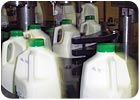
Acid bricks and mortar
Once you get past the Sable Palms being part of the outdoor landscaping, the Lakeland plant is fairly standard, at least in terms of its physical plant and equipment, but one that reflects an investment in upgrades and one that’s impeccably maintained. The facility is one of several buildings that make up the Publix manufacturing and distribution complex in Lakeland, just a few blocks from the corporate offices. Other manufacturing operations include a fresh cut produce plant, a bakery and a deli, and even a print shop that provides the labels for the dairy’s fluid products.Milk is received through one of three bays, with a fourth bay dedicated to juice receiving. Standard raw milk tests are performed, and early this year, the plant began requiring certification from producers indicating that they do not use rBST. Raw milk comes from Southeast Milk Inc. cooperative, with most of it coming from Florida except in the peak summer months when it is drawn from cooler climates.
There is more than 200,000 gallons of raw milk storage available in several silos. There are four HTST processing systems at Lakeland, with two dedicated to fluid products and one each for ice cream and cultured products, outfitted primarily with APV equipment.
There are six fluid filling lines for gallon and half-gallon fluid products, outfitted primarily with Federal rotary fillers. Pasteurized milk storage totals more than 200,000 gallons.
There are two ice cream lines with Gram ice cream freezers and Osgood fillers, and two cultured product lines with Osgood fillers. Pumps and valves were replaced in 2004 with Fristam and Waukesha Cherry-Burrell components. The plant also has four blow mold machines, three for gallons, one for halves. Beyond the filling room there are several automated casers for various products, two robotic palletizers for the three cultured lines and one robotic palletizer for ice cream’s two lines.
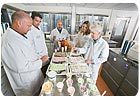
QC and R&D
The Lakeland Publix plant has a state-certified QC lab and a product development lab that serves all three dairy plants.The QC lab is located next to the production areas so that operators can get samples tested quickly during production runs, says Ryan Holley, quality control mgr.
“Publix does whatever it takes to make sure we have the right tools to get the best results and do things efficiently,” says Holley, who heads a group of 10 technicians. “We have an FT2 MilkoScan which does all kinds of tests for products at all viscosities and it’s very accurate. We have even had equipment on trial basis to see if it would give us some advantages.”
Laura Johnson, who heads the product development team, says some new flavor trials are done with a 1,000-gal batch at the plant but many smaller trials are done in conjunction with ingredient suppliers at the suppliers pilot plants. Johnson and Cindy Bridges work with cross-departmental teams when implementing new products including limited edition ice cream flavors. Products that are to be produced at all plants are typically introduced at Lakeland first.
Holley says his department works with the autonomous QC departments at the other two Publix dairies in terms of calibration and sharing information and best practices.
The investments and improvements at the Lakeland plant have been fast and furious. In 1999, the plant converted to squround packaging for ice cream, and it now has a unit that manufactures the packages from flats. In 2002, a bulk powders system was installed for the in-house manufacture of condensed milk for use in ice cream and cultured products. In 2003, a CIP-able airblow system, engineered in house, was installed for product recovery. The product recovery system, which helps control the BOD in the plant’s waste stream, is one of the several initiatives aimed at limiting environmental impacts, and was approved by the Florida Department of Ag Dairy Division. Making it CIP-able also helped the plant in its efforts to minimize contamination, which is the only way it was able to pass muster for the long production runs. Also in 2003, an outmoded computer control system was replaced by a state-of-the-art integrated system from Kline Process Systems.
Just last year Publix worked with Ecolab to construct a new CIP and chemical room.
“Publix does it the right way by putting everything together in one room,” says Gary Carlin, who handles the Lakeland Publix account for Ecolab. “We did a major refit of the CIP system into the room. We’ve also labeled everything-there’s never too much information when it comes to chemicals.”
In recent years silos have been replaced. In fact, a new silo from Walker Stainless was installed in June, just after Dairy Foods visited the plant.
The plant features a mezzanine-level viewing corridor that is used for public tours. And the second floor also houses offices and conference rooms.
Soda pop and milk caps
One of the unique features of the Lakeland plant is the carbonated soft drink line. The Crown 45-head filler is similar to a rotary milk filler, but designed to work under pressure to stabilize the carbonated product. Bottles are manufactured off-site and debagged at the head of the line.“At one point we used an ordinary conveyor for the empty bottles,” Collins says, “But all you had to do was open a door and the slightest breeze would knock them all over like a line of dominoes.”
The current conveyor grasps the neck of the bottle and moves it pneumatically like similar systems used for single-serve milk and drinkable yogurt bottles. Downstream from the filler, bottles are put into crates similar to those used for milk gallons.
Early this year, the Lakeland plant was the first in the Publix group to convert to a new milk jug cap, designed to provide better tamper evidence. Publix was also looking to minimize leakage, and to do so with a cap that could be applied at high speeds. They found what they were looking for in the 38-DBJ cap from Portola Packaging. The DBJ was developed recently in part to answer more stringent tamper-proof requirements from FDA.
“You can’t get the cap off without separating it from the band,” says Portola’s v.p. of sales Ron Pettineo.
Publix is now using the new cap in all of its plants, for all gallon and half-gallon jugs, Paolillo says. “We get a lot less leakage and shrinkage and a lot of efficiency,” he says.
Years ago, Lakeland manufactured its own caps, but it has bought them from Portola for many years now.
From a management team and associates with a vested interest, to its well maintained facilities, the Lakeland dairy of Publix is a great example of what a dairy plant can aspire to be. Lakeland’s innovative approaches to dairy production show that it’s certainly focused on quality manufacturing for the long run.
Publix Continues to Build on Reputation for Excellence
The Council for Sustainable Florida recognized Publix Super Markets for a number of commitments the company has made to sustainable practices. These include Get into a Green Routine, a Publix program launched in 2002 to educate associates on energy conservation, and a Publix generator program announced in 2006 to install 400 stationary and mobile generators to hurricane-prone store locations at an approximate investment of $100 million.“Our commitment to sustainable practices begins with associate involvement in conservation programs, including energy conservation, waste reduction and recycling, water conservation and hurricane preparedness and recovery,” said Maria Brous, Publix director of media and community relations. “As a Florida-based retailer, we are focused on the sustainability of our state and protecting resources.”
This is just the latest in an exhaustive list of accolades and accomplishments for the Florida-based employee-owned company. For instance:
Since the first Publix store was opened in 1930 in Winter Haven, Fla., by grocery store manager and entrepreneur George Jenkins, the company has always set the bar high. The company has been one of the innovators of industry, being among the first to introduce cutting edge features like air conditioning, ATMs and product scanners.
Publix is one of the 10 largest-volume supermarket chains in the United States, and had 2006 retail sales of $21.7 billion. It has more than 140,000 associates, and operates more than 900 stores in Florida, Georgia, South Carolina, Alabama and Tennessee.
The dairy manufacturing includes three facilities, and annual sales of dairy products manufactured amount to more than $550 million. Publix is active in the dairy industry, with dairy executives serving in the International Dairy Foods Association.
Earlier this year, the Publix Premium Sticky Buns Ice Cream was judged the most innovative flavor in a contest sponsored by Dairy Foods at IDFA’s Ice Cream Technology Conference.